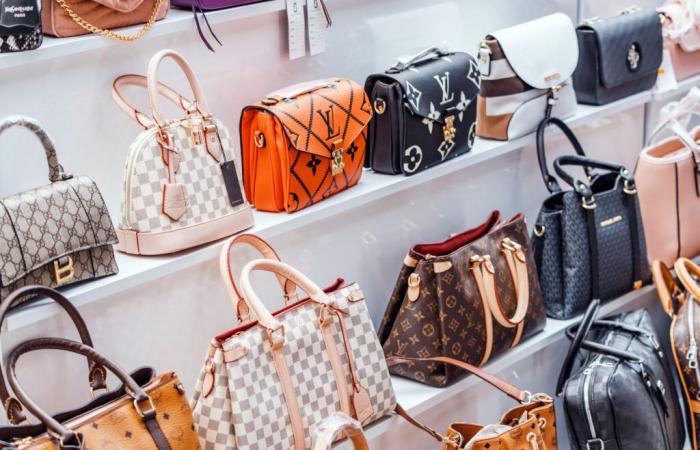Adobe Stock
Generation Z apparently likes B-movies. There is no longer so much shame in wearing imitations of big brands today, especially since they are a little better made every day. Because we live in the golden age of “dupes”. Those who indulge in it prefer to buy an alternative for a few euros rather than bleed for a product made by a luxury brand, or deprive themselves of something close to it. Counterfeits have always existed, you might say. But we have moved to a higher level. Where they were the prerogative of street sales in squares or on beaches, today they can be ordered via the Internet. And not just anyhow.
For example, the site dupe.com is a pretty impressive search engine for alternatives to the most expensive furniture. Just click on a Nordic-style chair, an American-style armchair or an elegant table lamp – usually inexpensive supplies – to find their inexpensive equivalent. With a score given for price, similarity and aesthetics. We could spend the day hunting for triple A+. The site should also soon expand its range of products beyond just furniture. The Swiss newspaper The Geneva Tribunewho recently looked at the success of “dupe culture” among Generation Z (born between 1997 and 2010), visited the Chinese site DHgate. “You can find everything from deceptively good-looking Dior handbags to Gucci loafers. Instead of 2,140 euros, you only pay around 32 euros for a bag here – a bargain. But the copycat trend is not only about illegal theft of designs, but also about cheaper alternatives to very popular products.”
Health risk and overproduction
Among these popular products, Football jerseys. Football fans and festival regulars know that club or national team jerseys have become t-shirts in their own right. And “real” jerseys, meaning those made by the biggest sports brands, are terribly expensive. A flocked tunic can reach 150 euros… when you decide to buy a “real” swimsuit. Because imitations abound on the Web and are, objectively, striking in their resemblance. For some, three washes will convince you of the difference in quality. But a survey by our colleagues at#Investigation revealed this summer that others come from the same factory as the official ones, are produced in the same way, but escape Adidas, Nike or Puma. And are sold much cheaper.
As we have said, the practice is so established that sites today offer to scan an object and immediately find similar options at much lower prices. And in all areas: textiles, cosmetics, furniture. Almost everything is in an accessible version. While it is tempting to sneer at the challenges this represents for the all-powerful brands, it should be noted that the differences in quality are not just aesthetic. Traces of lead or mercury were found in some of the famous and successful fake football jerseys. The quality of cosmetics may also be lower. Beyond the purely financial aspect, it could ultimately be a public health issue to keep an eye on. Because if there is a sector where we know the dupes, it is that of perfumes: chemical products placed directly on the skin, whose quality controls are very strict. Dupes may escape these controls, and contain harmful substances. They also contribute to a certain overproduction and overconsumption, the furniture found by dupe.com often coming from sites like AliExpress or Temu.
Too big to fail?
As for the marketing specialists we were able to contact, we were told that they didn’t have much to say about it, for the moment anyway. The behavior of consumers, and young people in particular, who are particularly receptive to the encouragement of certain influencers on TikTok, would above all be dictated by a search for low prices. And by the end of the stigmatization of those who present themselves with imitations. On the contrary, today, in a context of social crisis, inflation and distrust of the inaccessible, “the motto of the followers of this new trend is: only stupid people still spend a lot of money on an original”summarizes the Swiss newspaper.
What do luxury brands think? We walked through an Inno gallery in Brussels. “Yes, we know the phenomenon of fools”points out a saleswoman at the Chanel counter. “At the moment, I don’t feel like it’s having a real impact on sales, the margins are so huge for luxury brands. In my opinion, the parent company is keeping an eye on them, but the fight against dupes is not a priority. Especially since a brand like Chanel has a very loyal clientele.” A little further, at Longchamp, they also say they are aware that these fake bags are circulating “but here, we have never been confronted with it and we still sell just as much”. “For a luxury brand, being copied is rather good publicity”we are told at Dior.
A saleswoman from another cosmetics brand, a bit less prestigious, further clarifies the inability of dupes to impact large firms. “Sometimes people are more looking for the packaging, the packaging, but the fact that they can find cheaper alternatives that could potentially work in the same way appeals to them. This allows them to have a taste of more luxurious products. Clearly, this creates competition. I’ve talked to customers before who said they used to buy luxury products, but since they found more or less the same product for less, they don’t want to spend as much money.”
Luxury fatigue
To fight against imitations, manufacturers will have to do much more than ban them. Because the phenomenon comes in particular from a fed up with luxury, a “luxury fatigue” observed by professionals in the commerce sector. And objectified by sluggish financial results. Kering and Burberry lost 11 and 22% in turnover compared to 2023. LVMH is doing better, with a decrease of a small percent, which nevertheless raises eyebrows among shareholders.
So has the luxury sector reached its limits, after the crazy sales figures at the end of the Covid crisis? Or will it take advantage of the phenomenon to reinvent itself and ride on the publicity offered by products wanting to imitate it? What we do know is that many luxury brands are trying things at the moment. Even if it means falling into ridicule. But fewer consumers today are drooling over a Louis Vuitton sandwich bag at 2,700 euros, or over glaringly banal Balenciaga shoes at 1,100 euros. Products mocked by (part of) Generation Z, not stupid.
Moreover, proof that it is both complex and fascinating for researchers, Generation Z and its way of consuming were recently the subject of another study. Produced by the resale platform ThredUp, it reveals that genZ has all its weight in the second-hand market. With its big brothers and big sisters of genY, it represents 2/3 of buyers of second-hand products. Rather a good habit but whose exponential growth has two perverse effects: greater first-hand production, and the explosion in the prices of second-hand products, sometimes becoming more expensive than new ones. GenZ may therefore quickly have to readjust. See you for the next study and the next trend.






